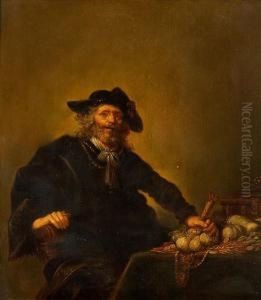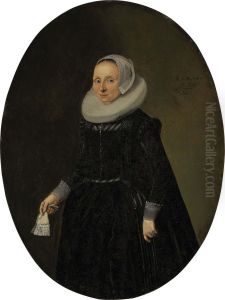Hendrik Gerritz Pot Paintings
Hendrik Gerritz Pot, also known as Hendrick Gerritsz Pot, was a Dutch Golden Age painter born in 1580 in Haarlem, Netherlands. He is particularly known for his portraits and genre scenes, reflecting the cultural vibrancy and economic prosperity of the Dutch Republic in the 17th century. Pot was a versatile artist, his oeuvre includes historical paintings, allegories, and scenes of public festivities.
Pot likely received his initial artistic training in Haarlem, which was a thriving center for art and culture at the time. He became a member of the Haarlem Guild of Saint Luke, a common practice for artists of that period which allowed them to sell their works and take on apprentices. In 1620, Pot was appointed as a dean of the guild, which is a testament to his reputation and standing among his peers.
Pot’s work was influenced by other Dutch artists such as Frans Hals, whom he may have known personally. Like Hals, Pot was skilled in capturing the liveliness of his subjects, often imbuing them with a sense of individual character and vitality. His portraits were not just mere representations; they often carried allegorical or symbolic meaning, a reflection of the intellectual environment of the time.
In addition to his work in Haarlem, Pot spent some time in London where he worked at the court of Charles I of England. This period was significant as he painted portraits of the king and members of the aristocracy. His style was well-received in England, and he contributed to the exchange of artistic ideas between the Dutch Republic and England.
Pot's career flourished throughout his life, and he continued painting until his death in Haarlem in 1657. His works can be seen in various museums and collections worldwide, showcasing his contribution to the Dutch Golden Age of painting. Although not as widely known as some of his contemporaries, Pot's art provides a valuable insight into the social and cultural life of his time, and his portraits continue to be appreciated for their elegance and insight into the human character.

